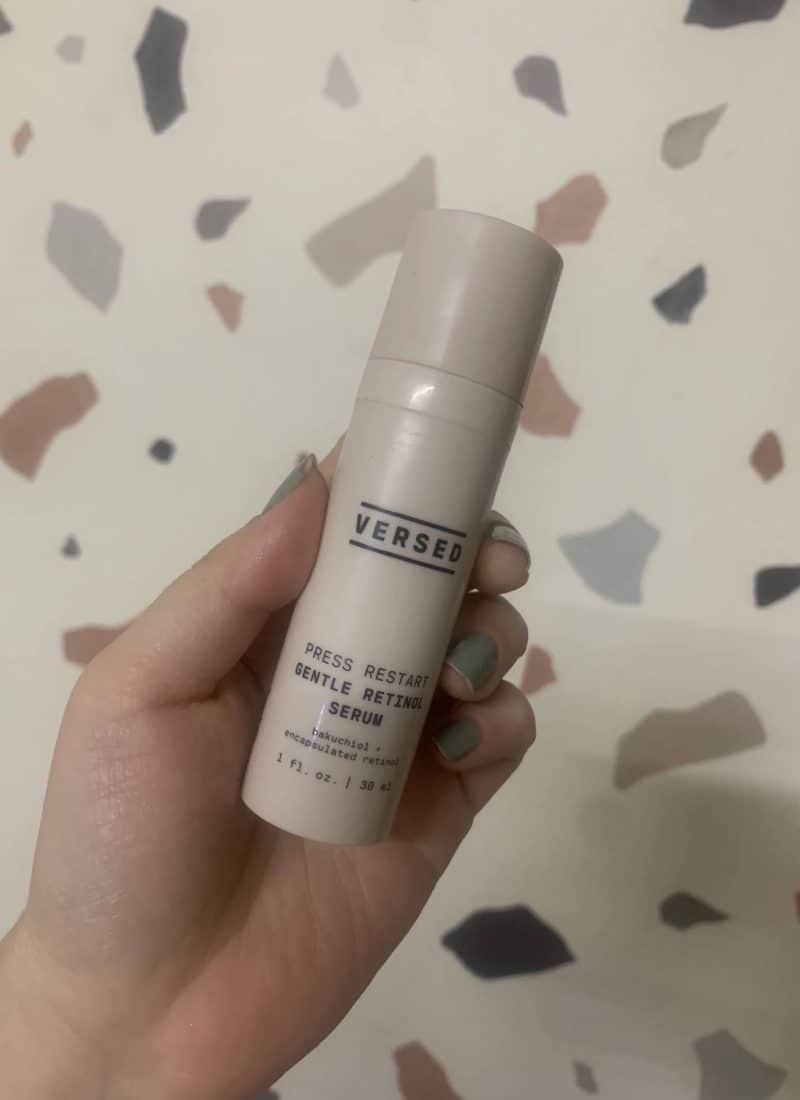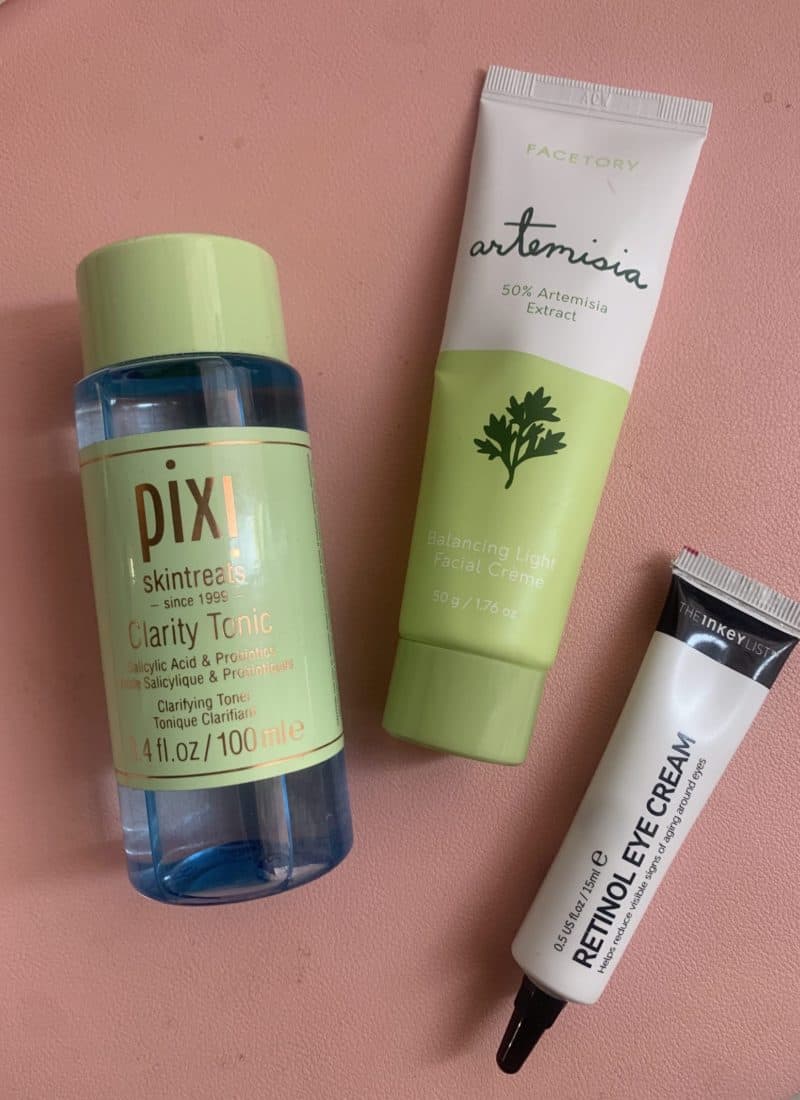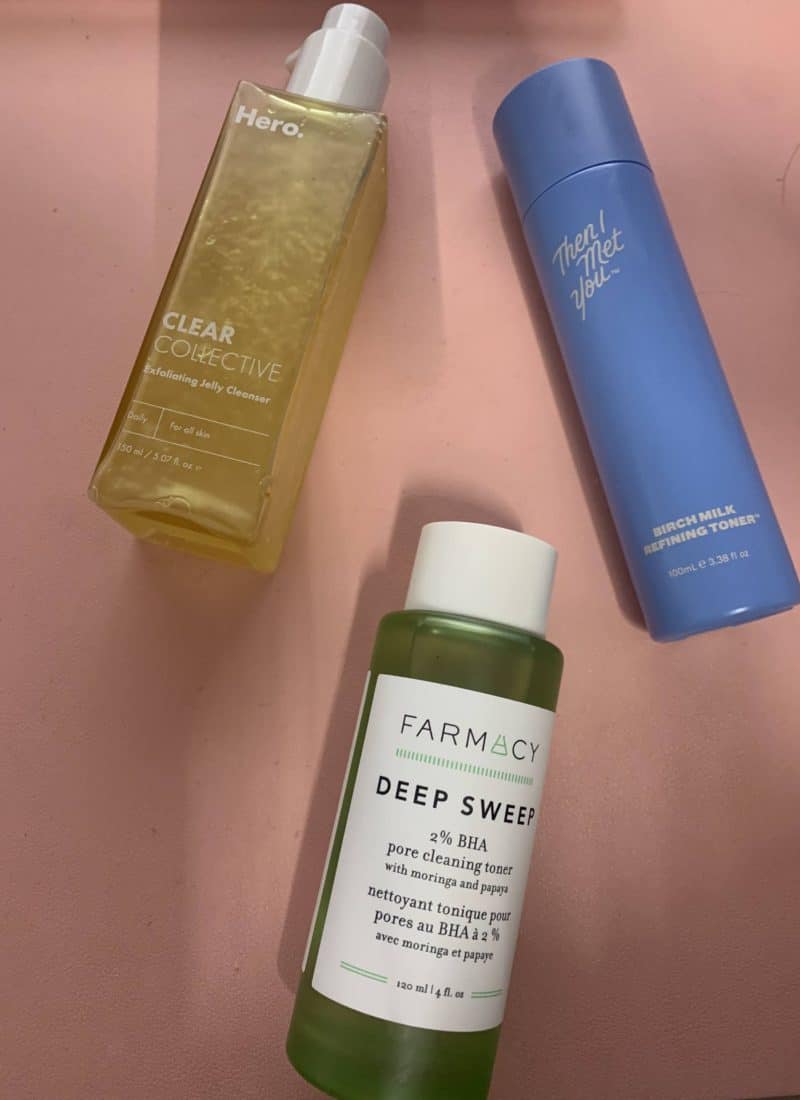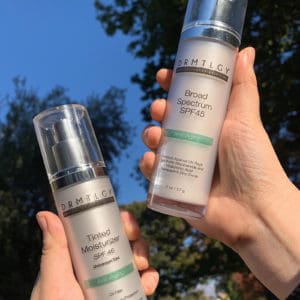There are thousands of acne products on the market, but the majority of them use the same six acne-fighting ingredients. We’ve talked about the main causes of acne, so today we’re going to be breaking down the main acne-fighting ingredients. They each treat acne a little bit differently and depending on the severity of your acne, you may prefer looking for one ingredient over another. I do want to point out that acne is a medical condition and I always recommend consulting with a dermatologist to treat acne. Today we’re going over the most common ingredients used in topical treatments for acne. However, people with more severe acne may need oral acne treatments as well.
The Six Main Acne-Fighting Ingredients

Salicylic Acid
Salicylic Acid is one of the most commonly used ingredients to treat acne. It’s a beta-hydroxy acid (BHA) that is approved by the FDA as a drug to treat acne. It works by removing dead skin cells from the surface of the skin, but it also penetrates deeper into the pore to help clear out excess oil and sebum. Salicylic acid is naturally anti-inflammatory and is generally well-tolerated compared to other acne-fighting ingredients. However, it can be a bit drying because of its ability to remove oil and sebum from the skin. So it’s important to balance salicylic acid treatments with hydrating, gentle products. Salicylic acid is a great option for blackheads, whiteheads, andsoem cases of mild acne. However, most people with more moderate to severe acne will not see significant results with salicylic acid alone because it does not help kill acne-causing bacteria.
Popular Products:
Benzoyl Peroxide
Another very accessible acne-fighting ingredient is benzoyl peroxide. Benzoyl peroxide is an anti-bacterial ingredient, so it kills P-acne bacteria and can also help shed dead skin cells and oil/sebum. It also helps to calm inflammation in the skin, but tends to be a bit more drying than salicylic acid. Benzoyl peroxide is typically more effective than salicylic acid due to its anti-bacterial properties, so it’s a great option for mild papules and pustules (small red bumps and pus-filled pimples). Its anti-inflammatory benefits also make it a great option for red, inflamed breakouts. Benzoyl peroxide is also often used with topical antibiotics to help prevent antibiotic resistance. You can find benzoyl peroxide in many acne serums and cleansers on the market!
Popular Products:
Retinoids
Retinoids are one of dermatologists’ favorite treatments for acne. They are a form of Vitamin A that exfoliate the skin and speed up cell renewal to target acne. It’s also a great treatment for signs of aging, uneven skin texture, and hyperpigmentation. They’re a truly multi-faceted treatment, but can be irritating for the skin. There is a wide range of retinoids on the market, ranging from over-the-counter products to prescription strength. Over-the-counter retinol products are a great place to start with retinoids, but prescription strength treatments will generally be more effective if tolerated. If you struggle with more moderate to severe acne, retinoids are a great option to clear acne and keep it under control long term. It’s also important to note that retinoids are not safe for use while pregnant or breastfeeding.
Popular Products:
- Shani Darden Retinol Reform
- Versed Press Restart Serum
- Differin Gel
- Prescription Retinoids
Sulfur
Sulfur helps to dry out the surface of the skin and dead skin cells to reduce oil and sebum, which can help with breakouts & clogged pores. It’s often used in combination with other acne-fighting ingredients like salicylic acid. Sulfur is gentler than salicylic acid and benzoyl peroxide, but is only mildly effective on its own. It’s best used for blackheads and whiteheads, but “drying lotions” with sulfur and salicylic acid can help with pus-filled pimples. Sulfur is also often used in cleansers to help with balancing oil and sebum in the skin.
Popular Products:
Azelaic Acid
Azelaic acid is an anti-microbial and anti-bacterial acid derived from wheat. It can help target acne & rosacea by reducing inflammation & bacteria in the skin. It’s gentler than other exfoliating acids like glycolic, lactic, and salicylic acids. It’s a pregnancy-safe option that’s also great for rosacea-prone skin! Azelaic acid is typically not the first choice for treating acne because it’s is very gentle and mild. It can provide results slowly, but using it in combination with other acne treatments will provide best results. Azelaic acid can also help with post-inflammatory erythema (PIE) and hyperpigmentation (PIH). It’s a great gentle option for sensitive skin that can’t tolerate stronger acids or retinoids!
Popular Products:
- The Ordinary Azelaic Acid Suspension
- Topicals Faded
- Prescription Azelaic Acid
Clindamycin
Clindamycin is an antibiotic that stops the growth of bacteria and calms inflammation in the skin. It’s available in both topical and oral formats. Clindamycin is a great option for red, inflamed acne but it’s typically not used alone. Using it in combination with retinoids or benzoyl peroxide help to treat inflammatory acne! These power duos also help prevent antibiotic resistance (when bacteria can defeat the drugs designed to kill them). Most dermatologists recommend topical clindamycin as a short-term treatment to calm down inflammation quickly and effectively. More severe acne cases may need oral medications for painful, inflammatory breakouts.
Popular Products:
- Prescription Clindamycin
These are the six main acne-fighting ingredients! They all treat acne in different ways, and some are better for more mild cases, whereas others can treat more severe breakouts. Finding the ingredients that are best suited for your skin and type of acne is a great place to start. Skincare has a lot of trial and error, but hopefully this blog post can be a guide on somewhere to start. As mentioned earlier, I always recommend consulting with a dermatologist! They’ll be able to create a treatment plan specifically for your skin and acne severity. 🙂
Some of the links in this post are affiliate links. If you make a purchase through my link, I earn a small commission or credits at no additional cost to you. Feel free to check out all of my affiliate/referral links if you decide to shop. Thank you for your support!



